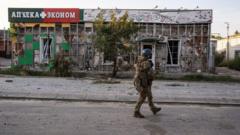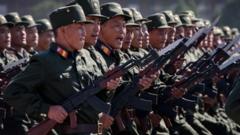The recent 42-day cease-fire agreement between Israel and Hamas has brought a glimmer of hope in the ongoing conflict, leading to the release of several hostages and triggering celebrations in Gaza.
Gaza Cease-Fire Agreement Sparks Release of Hostages

Gaza Cease-Fire Agreement Sparks Release of Hostages
A historic cease-fire in Gaza leads to the release of Israeli hostages and Palestinian prisoners.
As the cease-fire commenced, an exchange began with the release of three Israeli women: Romi Gonen, Emily Damari, and Doron Steinbrecher, who were joyfully reunited with their families. In return, Israel is set to release 90 Palestinian prisoners, all consisting of women and minors. This significant development has sparked celebrations among the families of both the Israeli captives and Palestinian prisoners, providing a moment of relief amidst an ongoing 15-month war.
Alongside the hostages' release, the Israeli military has confirmed the initiation of its withdrawal from certain regions of Gaza. However, Hamas quickly moved to assert its presence, with masked gunmen patrolling the streets in various cities.
The start of the cease-fire faced delays of nearly three hours, attributed to Israel lacking the formal release information regarding the first three hostages. Throughout this pause, military strikes continued in various parts of Gaza, highlighting ongoing tensions between the parties.
Hamas is expected to release 33 hostages over the course of this initial six-week phase of the cease-fire, with a majority believed to be alive, though nearly 100 are still in captivity. In reciprocation, Israel will release more than 1,000 Palestinian prisoners held in its jails.
Looking ahead, the cease-fire agreement cleverly sidesteps delicate issues, deferring significant disputes to a potential "second phase," of which details remain vague. For now, the arrangement allows for the daily entry of 600 aid trucks into Gaza, while Israel continues its military presence in parts of the region and retains custody of several high-profile prisoners during this initial phase.
Alongside the hostages' release, the Israeli military has confirmed the initiation of its withdrawal from certain regions of Gaza. However, Hamas quickly moved to assert its presence, with masked gunmen patrolling the streets in various cities.
The start of the cease-fire faced delays of nearly three hours, attributed to Israel lacking the formal release information regarding the first three hostages. Throughout this pause, military strikes continued in various parts of Gaza, highlighting ongoing tensions between the parties.
Hamas is expected to release 33 hostages over the course of this initial six-week phase of the cease-fire, with a majority believed to be alive, though nearly 100 are still in captivity. In reciprocation, Israel will release more than 1,000 Palestinian prisoners held in its jails.
Looking ahead, the cease-fire agreement cleverly sidesteps delicate issues, deferring significant disputes to a potential "second phase," of which details remain vague. For now, the arrangement allows for the daily entry of 600 aid trucks into Gaza, while Israel continues its military presence in parts of the region and retains custody of several high-profile prisoners during this initial phase.























